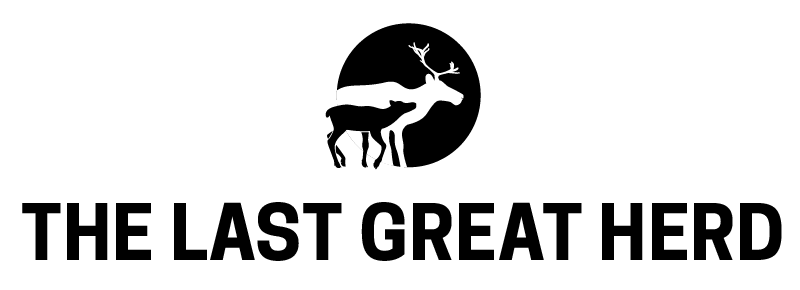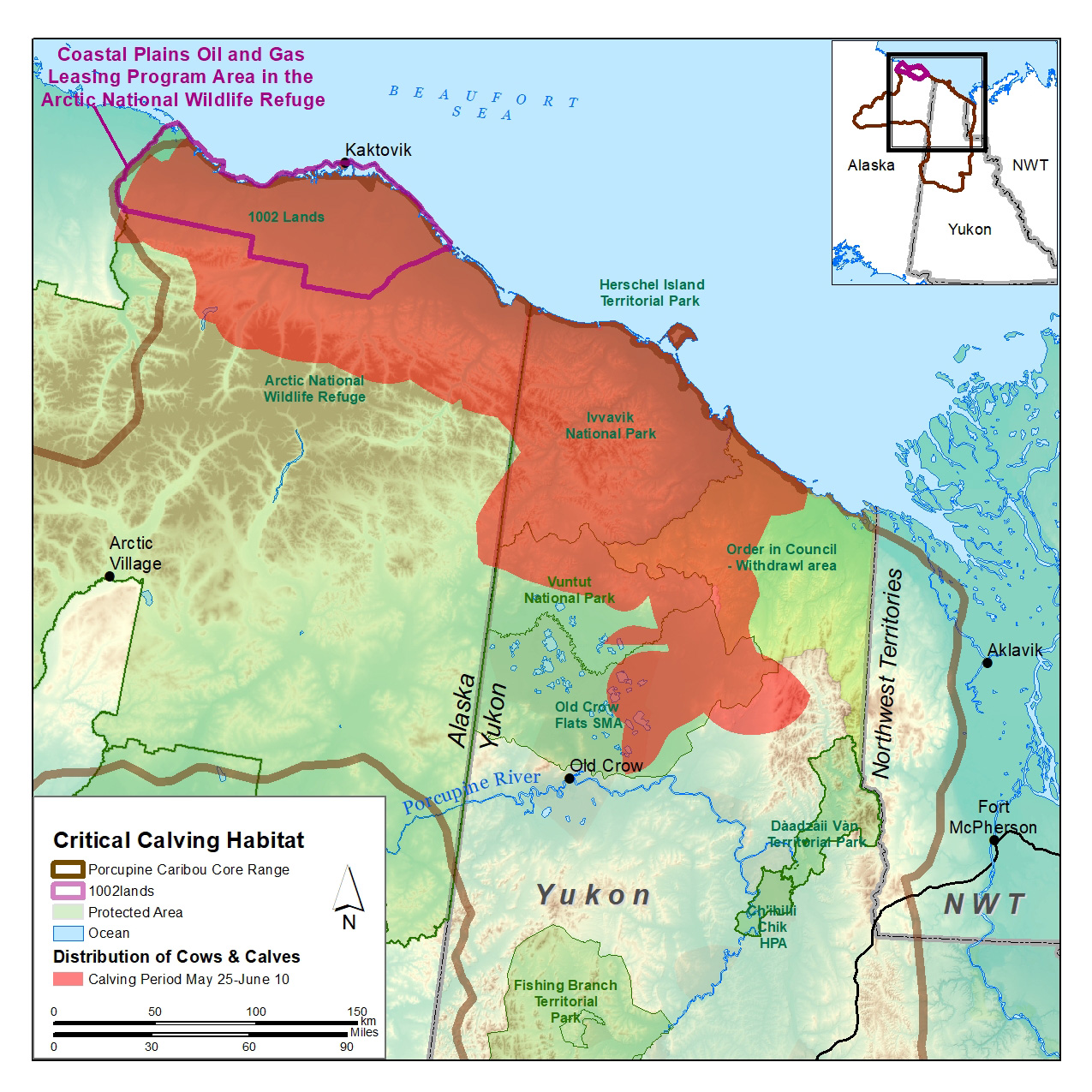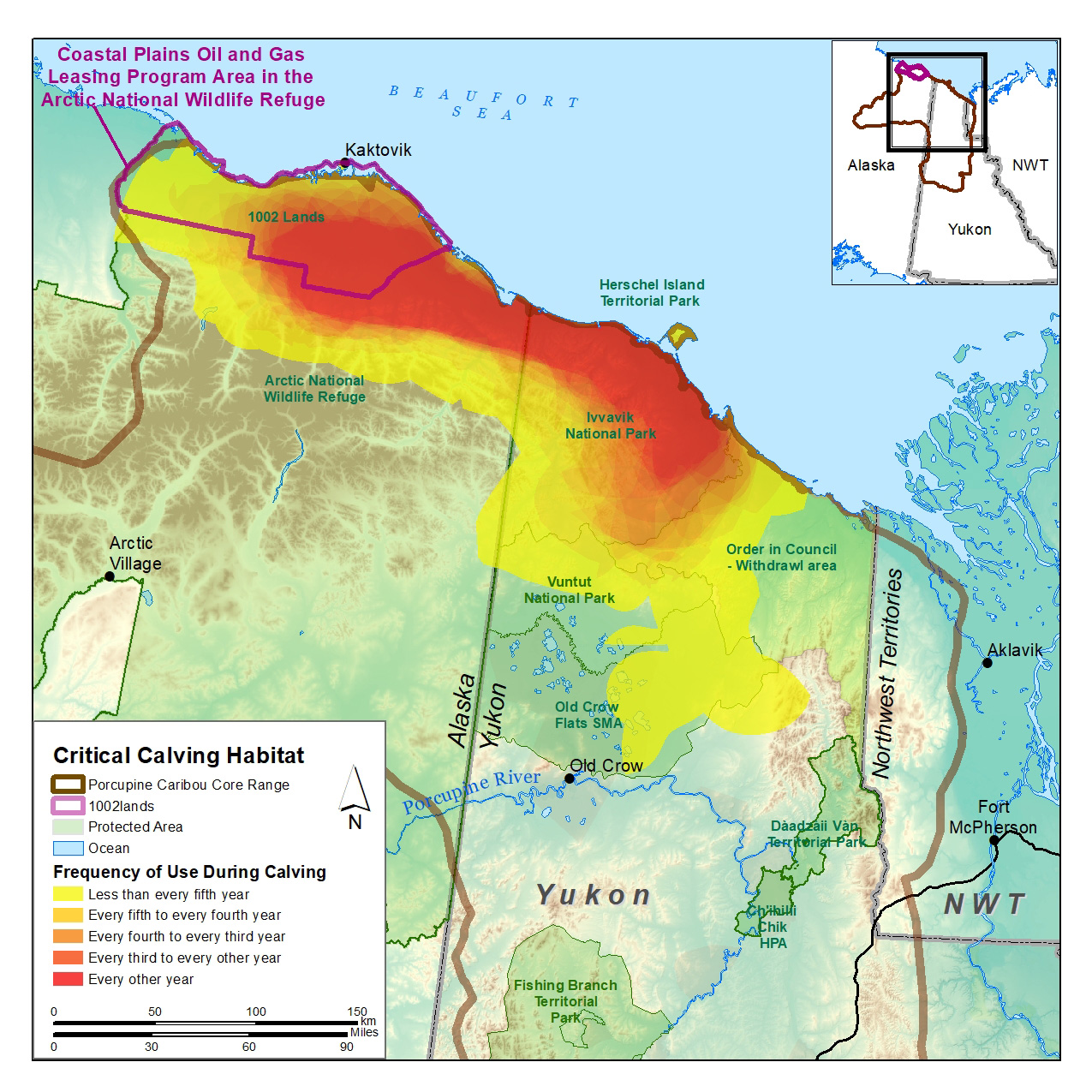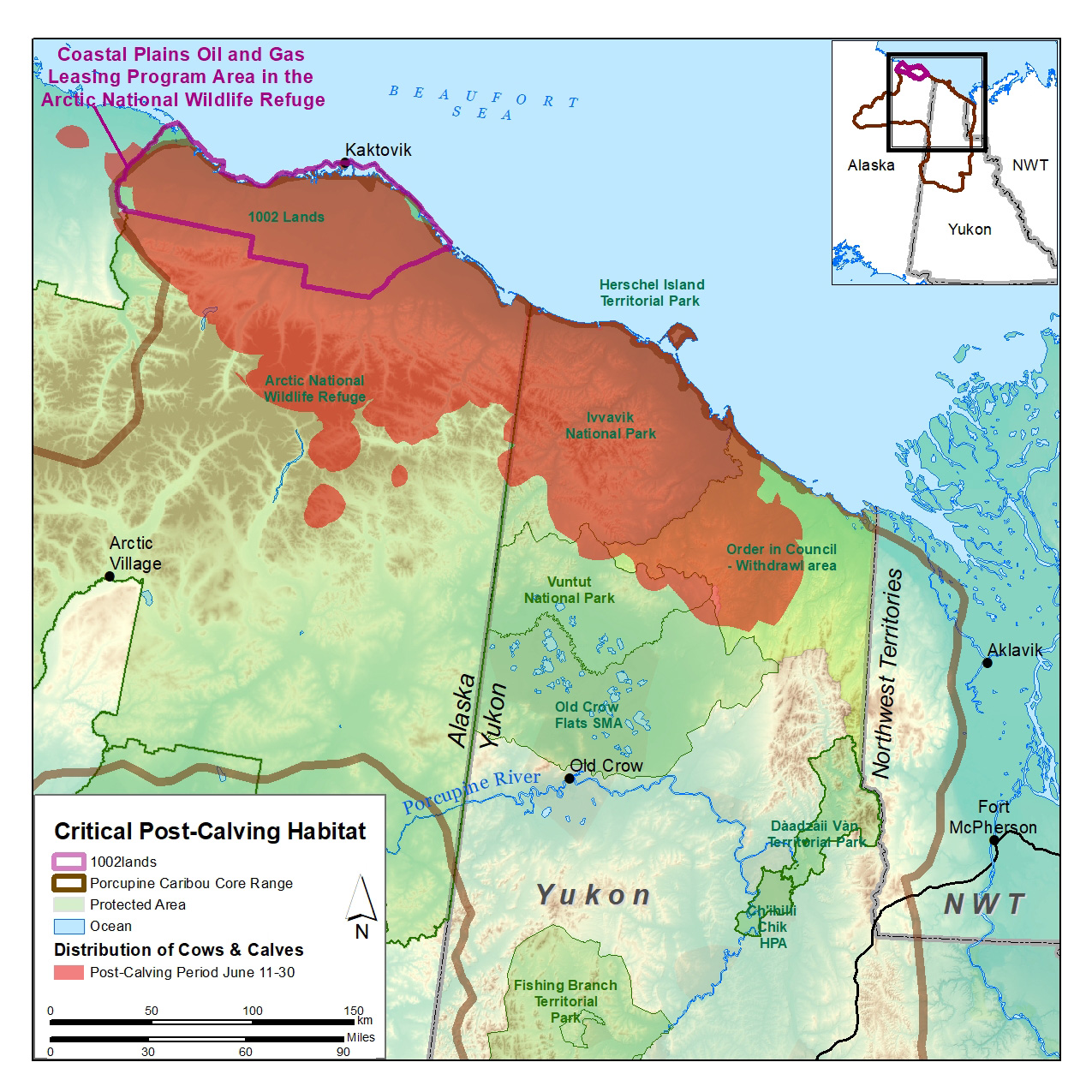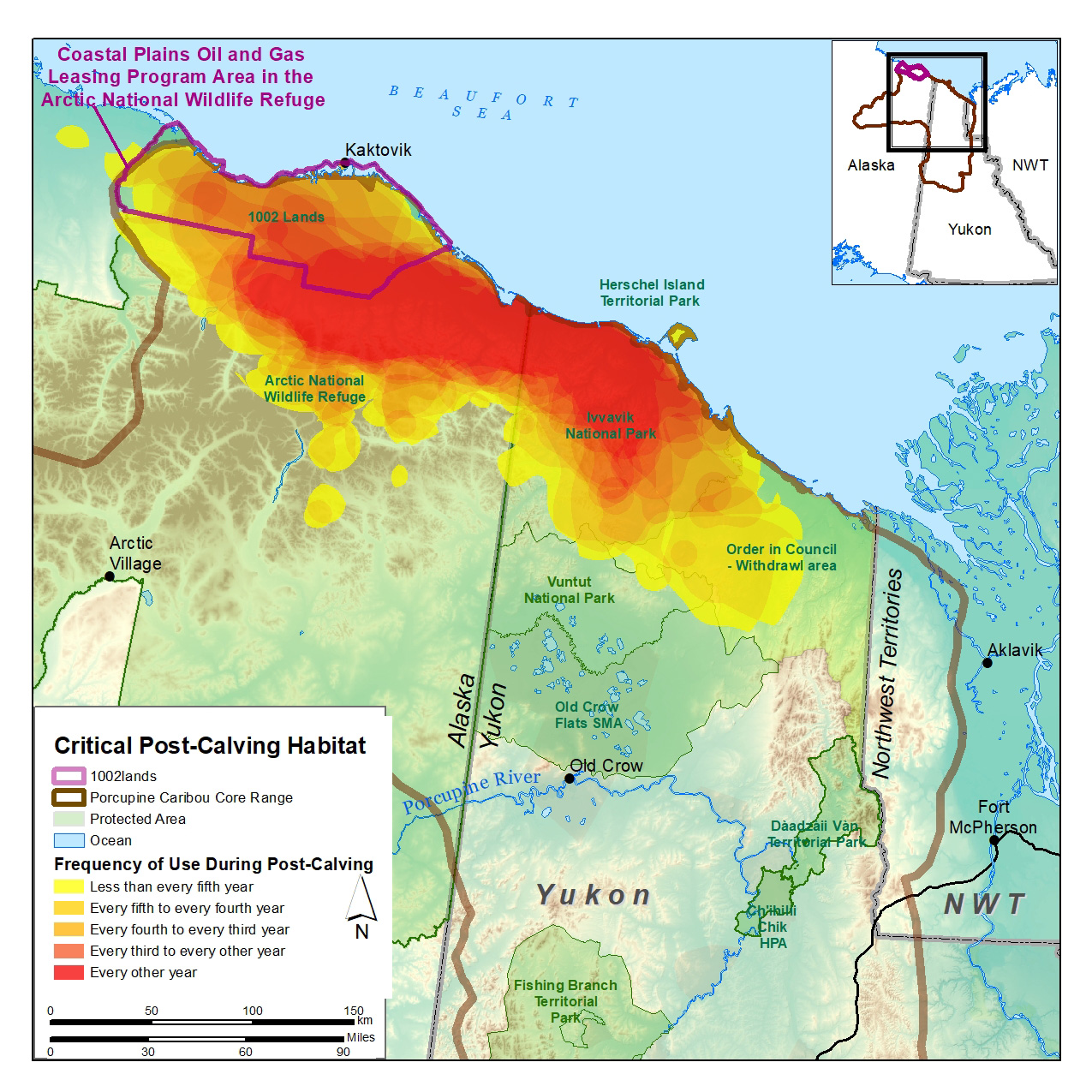The Porcupine Caribou Herd’s range covers over 201,000 square kilometres of northern tundra and taiga between Alaska, Yukon and the Northwest Territories. Ensuring the long-term viability of the herd’s range has been an important focus of land managers over the past 50 years. In Canada, two major national parks and many other conservation areas have been established to protect key habitats.
Each spring the herd migrates to the coastal plain of northeast Alaska and northwest Yukon to calve, which makes this portion of the range particularly critical habitat. Once there, caribou are able to access highly nutritious foods needed for newborn calves not available in other portions of their range in an area with relatively few predators. In Alaska, the Arctic National Wildlife Refuge has been an important conservation area to protect the calving grounds of the herd. The 1002 lands are used by the caribou for about one month, but this month is the most critical of the whole year and will determine how many calves join the herd.
The land they depend on
Calving
Distribution
- The Calving Period is the most critical time for the herd and when it is at its greatest sensitivity.
- The area identified for the proposed Coastal Plains Oil and Gas Leasing Program has the best sources of nutrition for the herd and provide the best opportunity for calves to survive and flourish.
- Displacement from oil and gas activities during the Calving Period is well documented and has not been shown to abate through time.
- Cow caribou travel to the Coastal Plains of Alaska and Yukon to have their calves.
- Canadian portions of the Calving grounds are protected using numerous conservation tools but the primary Canadian calving grounds are protected by Ivvavik National Park, an outcome of the Inuvialuit Final Agreement.
Frequency
- This map describes the relative use of habitats of Porcupine Caribou cows and calves during the Calving Period (May 25 – June 10 each year) between 1970 and 2017 (37 years of data).
- Areas identified in reds through all shades are frequently used by the herd for calving.
- Areas in Yellow found south of Ivvavik National Park are not selected by the herd as calving grounds but rather are used when they have no choice as a result of deep snow conditions.
- The herd chooses the best habitat to meet its needs. Failure to access a chosen area (e.g., due to oil and gas field development displacement) will likely result in reduced calf survival.
- The entire Calving Grounds are considered critical as the entire herd may use any portion of it in any year dependent on environmental conditions.
- When snow conditions allow, the herd will choose to calve in the boundary of the proposed Coastal Plains Oil and Gas Leasing Program.
- Use of habitats within the proposed Coastal Plains Oil and Gas Leasing Program results in higher calf survival for the herd.
- Climate change is reducing snow and making springs earlier which will result in greater use of the proposed Coastal Plains Oil and Gas Leasing Program area during the Calving Period, heightening why development of oil and gas within the Arctic National Wildlife Refuge is completely incompatible with conservation of the Porcupine Caribou Herd.
Post-Calving
Distribution
- The Post- Calving Period is the second most critical of time for the herd. Caribou with their calves will move towards the proposed Coastal Plains Oil and Gas Leasing Program area if not already there to seek high quality forage and insect relief.
- Caribou aggregate into dense super-groups to avoid biting insects. Caribou can number in the tens of thousands and are often shoulder to shoulder.
- Super-groups move quickly in search of adequate amounts of high quality forage to feed so many.
- Aggregations also occur at times when cow caribou require the best forage as their calves require the most milk and their condition is nearing its lowest point.
- New research shows that caribou through this period continue to avoid oil and gas activities and infrastructure where possible resulting in a loss of habitat around oil and gas infrastructure.
- If cows can’t obtain adequate forage their calves will suffer.
- Disturbances at this time of year can also directly impact the herd by causing panic which results in trampled calves, in addition to not allowing the herd to access necessary forage.
- All of these activities continue to impact on the health of the herd and survival of its calves.
- Mitigations for disturbances have never been attempted on super-groups of the size seen in the Porcupine Caribou Herd and recent evidence points to continued avoidance of oil and gas infrastructure.
Frequency
- This map describes the relative use of habitats of Porcupine Caribou cows and calves during the Post-Calving Period (June 11-30 each year) between 1970 and 2017 (22 years of data).
- Areas identified in red through orange-yellow are frequently used by the herd for post-calving.
- The herd chooses the best habitat to meet its needs. Failure to access a chosen area (e.g., due to oil and gas field development displacement) will likely result in reduced calf survival.
- The entire Post-calving range is considered critical as the entire herd may use any portion of it in any year dependent on environmental conditions.
- Regardless of where calving occurs, caribou will migrate towards and usually into the proposed Coastal Plains Oil and Gas Leasing Program area.
- Caribou frequently make concerted movements to the western portion of the proposed Coastal Plains Oil and Gas Leasing Program area in most years. Movements are fast and follow no specific route, reducing the likelihood that as to yet unproven mitigations are sufficient.
